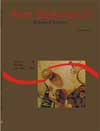<b>Effect of <em>Beauveria bassiana</em> (Bals.) Vuill. and <em>Metarhizium anisopliae</em> (Metsch.) Sorok. on Biological Characteristics of <em>Diatraea saccharalis</em> F. (Lepidoptera: Crambidae)</b> - DOI: 10.4025/actascibiolsci.v30i2.3627
Abstract
The sugarcane borer Diatraea saccharalis F. is considered one of the major sugarcane pests in the American continent. Among control methods, the use of entomopathogenic fungi has been broadly recommended to manage sugarcane pests, including other sugarcane borers. Therefore, this study investigated the effects of different concentrations of Beauveria bassiana (Bals.) Vuill and Metarhizium anisopliae (Metch.) Sorok on biological characteristics of the sugarcane borer. Third-instar larvae of D. saccharalis were fungi-treated using the concentrations of 103, 104 and 105 conidia mL-1. Larvae treated with 105 conidia mL-1 of B. bassiana showed lower survival (56.6%) compared to untreated larvae (90%). Adults originated from treated larvae laid a lower number of eggs and exhibited lower viability, and lived less compared to adults of untreated larvae. Also, larvae treated with 105 conidia mL-1 of M. anisopliae and adults originated from those larvae presented reduced performance compared to untreated larvae. Results indicate that B. bassiana and M. anisopliae are pathogenic to D. saccharalis larvae and affect its biology. Hence, they have potential to be used against this pest.Downloads
Download data is not yet available.
Published
2008-06-06
How to Cite
Oliveira, M. A. P. de, Marques, E. J., Teixeira, V. W., & Barros, R. (2008). <b>Effect of <em>Beauveria bassiana</em> (Bals.) Vuill. and <em>Metarhizium anisopliae</em> (Metsch.) Sorok. on Biological Characteristics of <em>Diatraea saccharalis</em> F. (Lepidoptera: Crambidae)</b> - DOI: 10.4025/actascibiolsci.v30i2.3627. Acta Scientiarum. Biological Sciences, 30(2), 219-224. https://doi.org/10.4025/actascibiolsci.v30i2.3627
Issue
Section
Zoology
DECLARATION OF ORIGINALITY AND COPYRIGHTS
I Declare that current article is original and has not been submitted for publication, in part or in whole, to any other national or international journal.
The copyrights belong exclusively to the authors. Published content is licensed under Creative Commons Attribution 4.0 (CC BY 4.0) guidelines, which allows sharing (copy and distribution of the material in any medium or format) and adaptation (remix, transform, and build upon the material) for any purpose, even commercially, under the terms of attribution.
Read this link for further information on how to use CC BY 4.0 properly.
0.6
2019CiteScore
31st percentile
Powered by 

0.6
2019CiteScore
31st percentile
Powered by 











1.png)




3.png)













